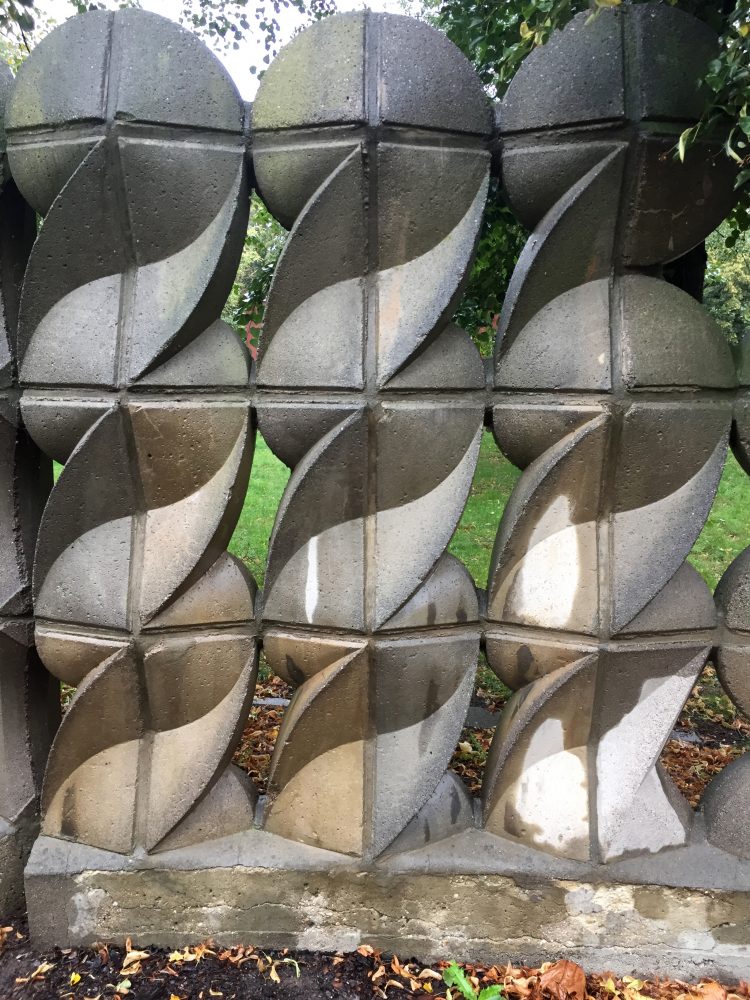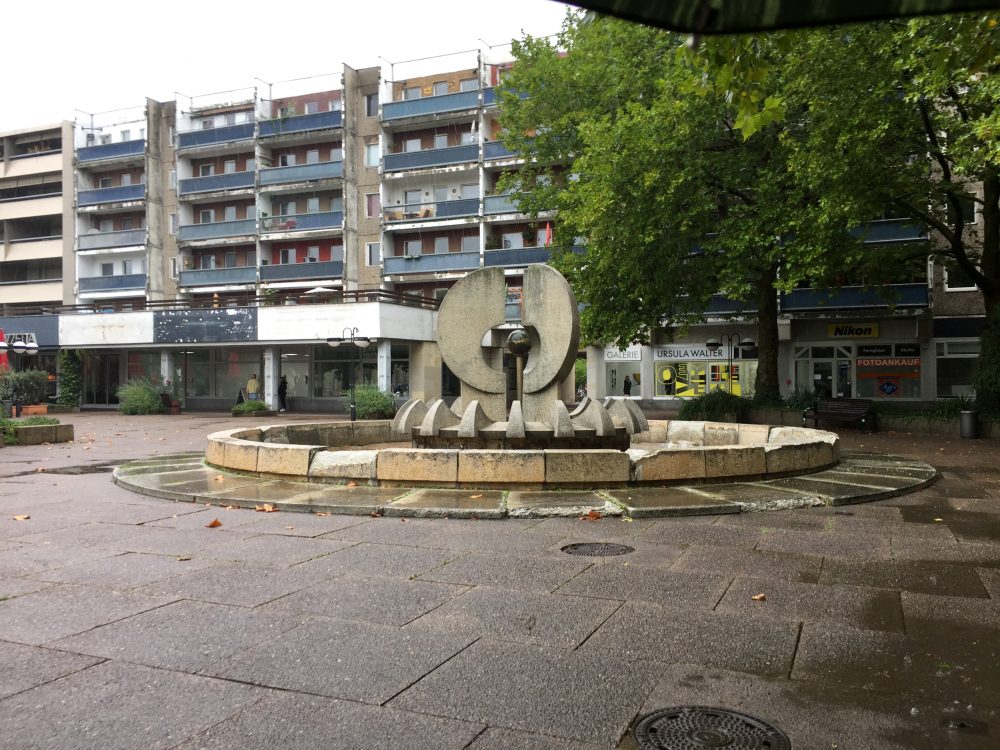Dresden Grafikwerkstatt
Barbara Helmer (1966) is a visual artist based in Rotterdam. She is a painter, and in addition she draws and silk-screens, makes risoprints and murals. Helmer works in an abstract way; her themes are 'the small parts' and/or 'the big whole'. The color and light of her work evoke the words 'shine through' and 'reflection'. In September/October 2020 Helmer went for an artist-in-residence to Grafikwerkstatt in Dresden.

At a time when everyone was staying at home as much as possible to prevent the coronavirus from spreading, I travelled as a visual artist to Dresden to work in the graphics workshop there for a month as part of an exchange programme. Despite the requirement to wear a mouth mask, I had been looking forward to a train journey, but just before I was due to leave, Rotterdam was declared a 'red area', which meant that I suddenly had to carry a coronavirus test with a negative result that was no more than 48 hours old.
Rotterdam was declared a 'red area'. That meant that I had to cancel my train journey and arrange a test
That meant that I had to cancel my train journey, arrange for a test and make sure that I would arrive in time - by car this time - in Dresden to wait for the results in quarantine in the guesthouse where I was staying. Fortunately it was negative, so I could start working. Because my mother came from Hamburg, I speak German easily. Yet I had never been to the former East Germany before, apart from a three-hour visit to East Berlin in 1987 via the well-known Check-point Charlie.
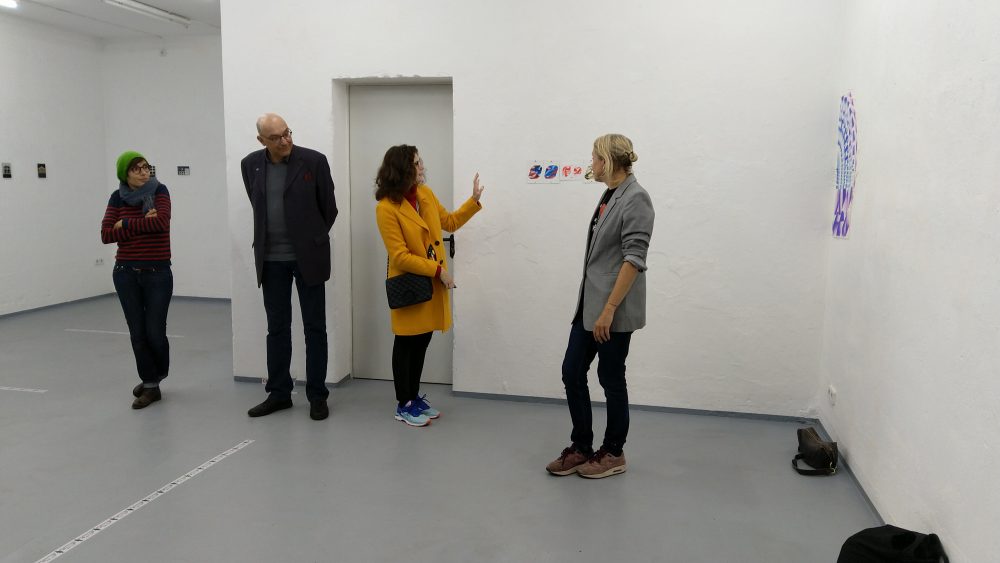
Dresden has a centre that was completely rebuilt in Baroque style after the allied bombing raids in the Second World War. In the middle of the city runs the river Elbe. The modern part of the city feels more authentic. And I found surprisingly much from the GDR era: the flats, concrete statues, fountains and special walls. Neighbourhood actions have recently prevented many demolition plans, I understood, and I too would hate to see it disappear.
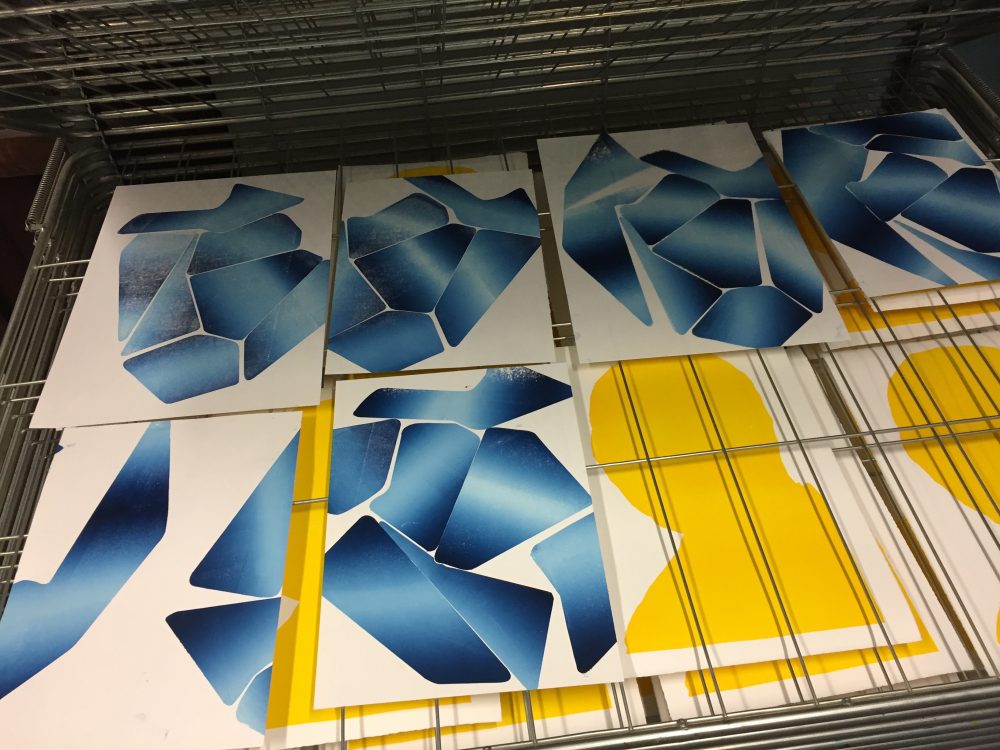
I rented a swap bike which took me half an hour to cycle to the Grafikwerkstatt Dresden. Before and during art school my experience with printmaking consisted only of etching and lithography. Only much later I started to work with screen prints and riso prints. Here in Dresden I worked with a for me new technique, the Algraphy. This is a printing technique on aluminium plates, somewhat comparable to screen printing because of the way the design is transferred to the plate, with exposure and not in mirror image, and it can also be done directly on the plate, as in lithography.
Here in Dresden we worked with a technique that was new to me, namely algraphy, which originated in offset printing.
The workshop in Dresden is large, 600 square meters. Everything is furnished with great care, with carts that are precisely tailored, with beautifully made wooden cabinets and cupboards that are partly from other workshops that have been closed down. The atmosphere there is timeless, classic. There are three permanent employees and then there is regularly the old man who comes to work with the lead letters. At the various workstations, visitors sit down to work on their own project, and make use of the advice and guidance of the staff.
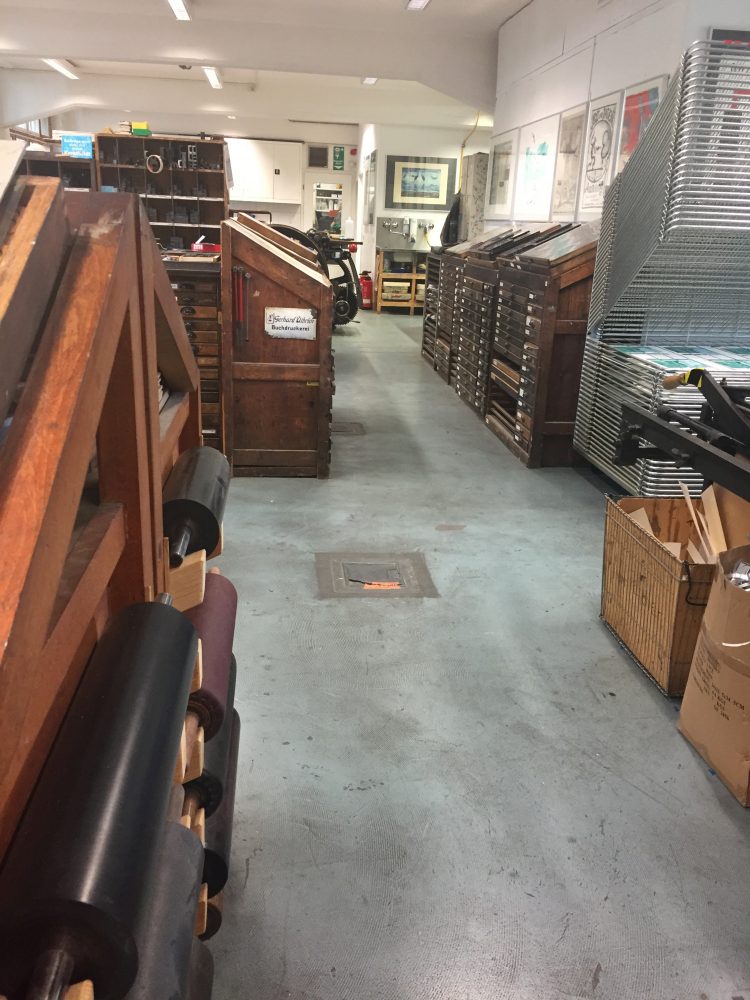
I could clearly see that the workshop had a history. The technique of printing on aluminium had been developed here for years and the technical knowledge was very extensive. The permanent staff expressly avoided contributing ideas about content. As a matter of principle, they were always told that they were trained to be printers, not artists. There was a tea break at ten o'clock and lunch at one o'clock. And at four o'clock precisely, the workshop closed. Graphic art is usually very labour intensive, and a day in the workshop flew by. Meanwhile the workshop is looking for successors, printers, or others, who want to continue this work. This kind of craftsmen is really hard to find these days.
I was actually surprised that this history, which took place thirty years ago, still played such a big role.
The conversations during the break were often about life in the GDR. All three employees of the workshop had experienced it and soon it would be the anniversary of the reunification of Germany. I was actually surprised that this history, which took place thirty years ago, still played such a major role. I noticed it first of all in the sceptical attitude when talking about corona. Now, people who lived in the GDR have every reason to distrust the state, but their distrust went very far and the current government was suspected of having invented the corona virus itself.
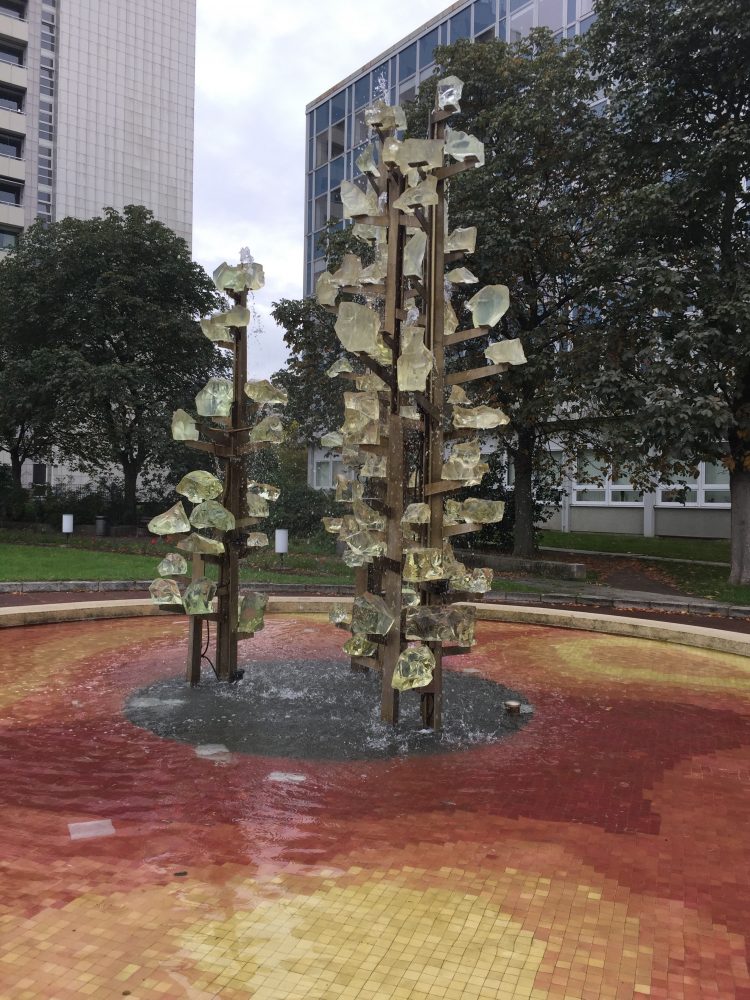
I noticed how the printers were still disappointed with the transition to a united Germany. After all, they were not asked at the time, they were simply reunited and it had been established that freedom was the most important thing, they said, but that was not the case at all: according to them, solidarity was the most important thing. And that had been destroyed by the Western political system. A lot was possible in the DDR, they said. Even punk bands performed in the basement. In their conversations I sensed the disappointment, but also the feeling of inferiority after the fall of the wall. Not everyone was up to the new demands. And I also felt how the pace in the workshop differed from the pace in my own environment, in Rotterdam. To be honest, after being allowed to use the workshop for a month, I would have liked it to stay open a bit longer than the daily closing at 4 p.m.
I noticed how there was still disappointment among the printers about the transition to a united Germany.
Old-fashioned solidarity, in the form of caring, I still experienced in Dresden by the way. I scratched with my unwieldy swapbicycle I bumped into a curb that I thought I could take at right angles, and fell. I was immediately approached from all sides, offered a terrace chair to relax in, a bag of ice for my damaged lip, immediately got an address of a dentist in the neighborhood and found it very striking how helpful and friendly everyone was. When I arrived at the workshop with a swollen lip and a slightly damaged tooth, I was told that another artist from the Netherlands had also fallen on his bike earlier. The Dutch are used to cycling but it works differently here. There are many bicycle lanes, but they also suddenly stop: Germany is a car country.
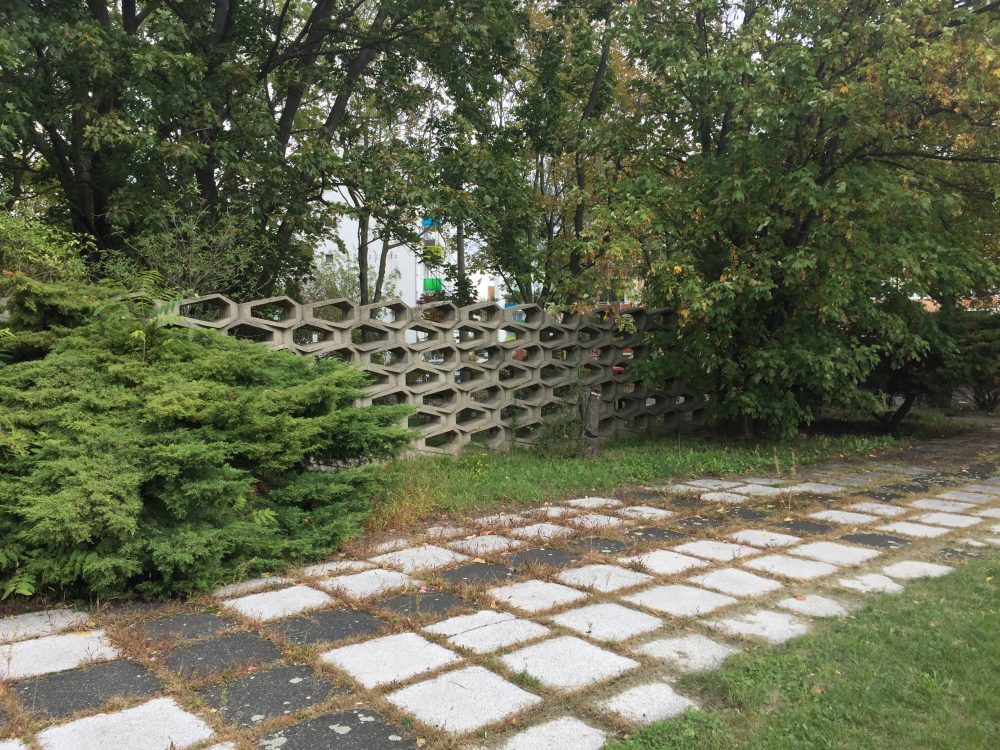
I was able to work quite hard during my month in Dresden and enjoyed it. A month goes by very quickly. I was in the guesthouse with an artist from Strassbourg (Carolin Gamon), we met in the workshop, we sometimes ate together and when we arrived, we already had a small exhibition of work that we had brought with us. I learned a printing technique that I can use in my studio without needing a workshop. That comes in very handy. When I got home I immediately bought a press. It is a nice addition to my painting. It was only when I got home that I noticed the relationship between my work in which I use switch shapes, and the beautiful concrete sculptures that I photographed in Dresden!
